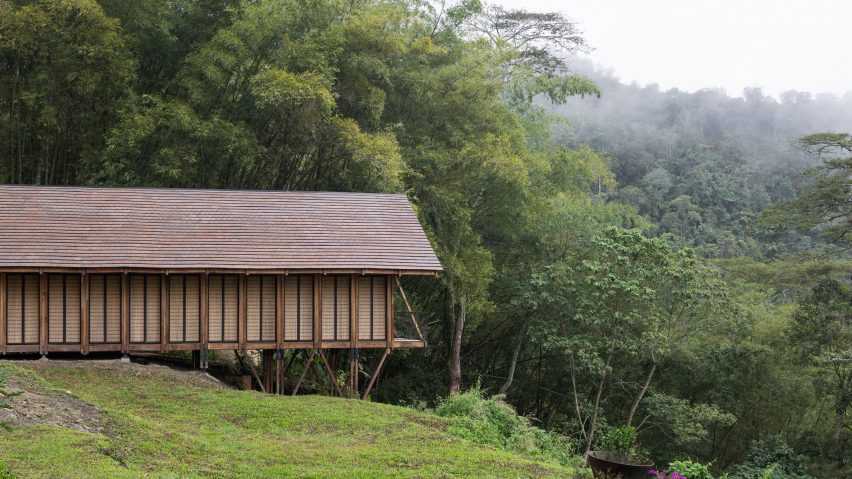A facade of woven wood screens filters light and air into this timber-framed home in Colombia, designed by architect Santiago Pradilla with architecture collective Zuloark as a prototype for more sustainable, local forms of construction.
Perched overlooking a rural landscape in the Department of Cudinamarca, Casa Tejida or Woven House was designed for the owners of a coffee plantation in 2019.
A range of construction techniques drawn from the expertise in the local community were incorporated into the design of the cabin-like home, including the timber structure, woven facade, metalwork elements and ceramic tile roof.
"Casa Tejida proposes an architecture made with techniques and materials better adapted to the places and climates they are located in, generating less impact and providing high-quality architectural solutions," explained the design team, which comprises Bogota-based Pradilla and international collective Zuloark.
"During the design and construction process, a community of work and coexistence has been formed, understanding the whole process as an opportunity for learning and training through the prototyping of the house."
The long, narrow plan of home is split into two storeys, with a double-height living area, dining and kitchen spaces alongside a bedroom on the lower level. Two further bedrooms above sit beneath the mono-pitch roof.
Despite these discrete areas, the home is effectively one large volume, divided only by woven screens made using the natural fibre Yaré that also create balustrades for the upper level.
Similar woven shutters cover the entire southern elevation of the structure, allowing this side to be entirely opened up to the outside, shaded by the overhang of the roof.
"Dispensing with constructive elements such as interior divisions, insulation and interior veneers, the weather conditions allow it to be a house completely open to the environment, where some mornings the clouds enter for breakfast," said the designers.
The more solid northern section of the home is clad in wooden shingles, with double-height swing doors creating dramatic entrances into the home and allowing for cross ventilation.
Instead of being dug into the site, the eastern end of the home is raised on stilts to extend out over the edge of a hill, with the living area opening onto a small terrace providing panoramic views.
"Casa Tejida is located perpendicular to the contour lines, adapting better to the existing topography, avoiding large earthworks and taking advantage of the best solar orientation and creating different ecosystems in each side of the house," said the designers.
The interior has been left free of wall finishes to celebrate the timber structure, complete with woven furniture to mirror the appearance of the screens and a hammock hanging from the beams.
"The simple and visible assembling details make the architecture of Casa Tejida comprehensible, adaptable and replicable in any other place by anyone," the designers continued.
Elsewhere in Colombia, a proposal was recently unveiled by a coffee company to build affordable and eco-friendly homes using recycled coffee husks.
The photography is by Federico Cairoli.

